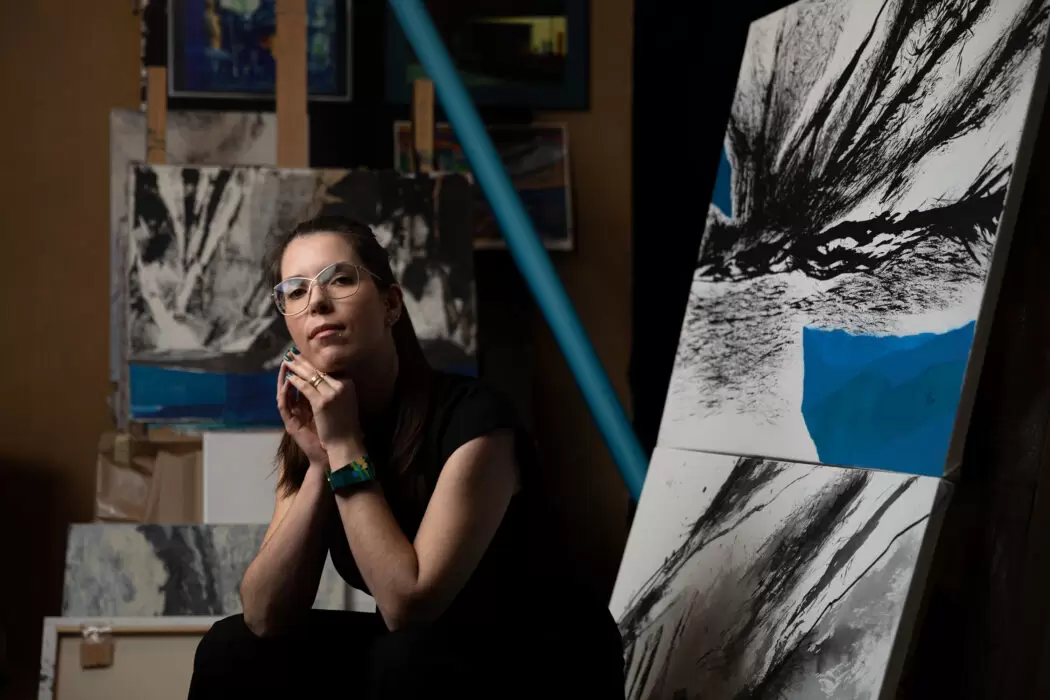.ART Domains at NFT.NYC: How NFTs are impacting the art world
.ART Domains Comms Officer Tina Feng recaps her NFT.NYC experience including adopters in attendance, crypto trends and legendary stage appearances.


Featured image: Elise Swopes, founder of Sunrise Club, shares the stage with Rob Richardson, founder of Disrupt Art
Days before the biggest NFT industry event unfolded in Times Square, the cryptocurrency market plummeted reacting to the foreseeable recession. Being a first-time attendee, I was bracing myself for a less frenzied version of NFT.NYC, but the conference turned out to be nothing like I feared—I was met with a crowd of overflowing enthusiasm and energy, and outstanding .ART community members on the speaking stage.
While I was waiting in the line of 16,000+ attendees to get my badge printed, I befriended two artists who perfected their crafts in oil paintings and had since launched their own NFTs. I have also crossed paths with some former art-historians-turned-NFT-advocates. Intrigued by their unique perspectives, for the next three days, I began to examine NFT through the lens of artists, art institutions, and collectors, and how NFT is changing the creation, acquisition, and preservation of art.

Spike Lee on NFT.NYC stage, Radio City Music Hall
For one, blockchain technology is deemed favorable for artists and creators. Unlike the hush-hush profit-sharing models between art dealerships and artists for the past several centuries, the traceability of blockchain technology unveils any mysteries around the transactions and provenance of the artwork. And smart contracts also allow artists to create a sustainable financial stream from their work, even when the artworks are traded in the secondary market. With more financial confidence, artists gain the agency to create art to their full expression.
At the same time, smart contracts cultivate a collaborative environment for creators. Platforms like async.art blueprints generate single-source collections with layered artwork, each layer by a different artist. The collector then mints a unique combination of the visual and audio elements.
As artists begin to explore NFT as a new creative medium, traditional art institutions quickly grasp the opportunity in the growing market of NFT. One example is Museum Belvedere, the long-time home of The Kiss by Gustav Klint, launched a 10,000-piece NFT drop based on the original on thekiss.art. Fans can now own a digital fraction of the masterpiece and enjoy free annual admission to the museum to experience the artwork in real life.

Katharina Steinbrecher, Director of Communications & Marketing, Museum Belvedere
Such omni-channel experience of art is the future we can see on the horizon. The rise of both NFT and metaverse is rapidly changing how the audience interacts with art and further expanding the categories of art. Hans Ulrich Obrist (jsc.art) curated metaverse Worldwide Webb in “WORLDBUILDING GAMING AND ART IN THE DIGITAL AGE” at Julia Stoschek Collection. Platforms such as searchlight.art and disrupt.art that focus on curating art diverse in formats and cultural backgrounds emerged.
Afterall, the essence of NFT is community. The creators are no longer behind closed studio doors—the creative process involves active conversations with the community. Not only that there are participatory performances like NFT Culture Proof (nftculture.art), but there are also NFT projects like boki.art and sunrise.art that are built on engaging communities.

Beatriz Ramos of dada.art on stage of NFT.NYC
Looking back to .ART’s journey of growing a community of 200,000+, I found more similarities with these growing NFT projects than when I first stepped into the conference. NFT could be the medium for artists to realize their creative ideas, connect with like-minded people across the globe, and create a ripple effect farther beyond.
NFT.NYC was attended by dozens of talented personalities, innovators and visionaries including .ART adopters such as snark.art, misa.art, canvia.art, biba.art, async.art and kennyschachter.art






